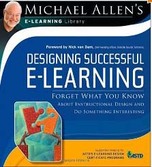
Distance learning has evolved over several decades, reflecting advancement in technology and demands by the student population. Initially, distance learning required the instructor to travel to satellite branches of a college or university. Additional methodologies commonly used by distance learning programs included correspondence courses and independent studies. By 1975 to 1985, distance education programs had transitioned from recorded materials distributed by audio visual tapes, compact discs, and public television to cable and satellite television. The broadcast of course material via cable and satellite television facilitated the delivery of course material but failed to ensure timely communication between students and the instructor. Two way communication evolved with the use of audio video teleconferencing.
Greenberg (1998) defined distance learning as “a planned teaching/learning experience that uses a wide spectrum of technologies to reach learners at a distance and is designed to encourage learner interaction and certification of learning” (p. 36). Teaster and Blieszner (1999) explain that “distance learning has been applied to many instructional methods: however, its primary distinction is that the teacher and the learner are separate in space and possibly time” (p. 741). Desmond Keegan (1995) stated that distance education and training result from the technological separation of teacher and learner which frees the student from the necessity of traveling to “a fixed place, at a fixed time, to meet a fixed person, in order to be trained” (p. 7). There seems to be agreement that distance learning is characterized by the student and teacher are separated by space (aka distance), but not necessarily by time.
Mistakenly, many people think of eLearning or electronic learning as courses taught online via the web, but in truth eLearning captures all forms of electronically supported teaching and learning activities. When an accounting professor requires their students to utilize Microsoft Excel or Quicken to apply the accounting formulas and calculations covered in a lesson they are engaging in eLearning. When students utilize Microsoft PowerPoint to design a classroom presentation or record an iMovie to demonstrate an experiment then they are engaging in eLearning. Regardless of the specific activities, the utilization of information and communication technologies both "with-in" and "out-of the classroom" represents forms of eLearning.
From time to time, this blog may utilize several common abbreviations, so allow me to start a list of abbreviations/ acronyms that you may encounter with regard to eLearning:
- CBL - Computer-based learning is the use of computers as a central component of the educational environment. During my electronic marketing course, computers are used during classtime to apply the traditional marketing concepts in context of web marketing, social media, email marketing, SEO, and others. CBL applies to a structured environment in which computers are primarily used for teaching purposes.
- CBT - Computer-Based Training are typically linear educational programs involving self-paced learning activities accessible via a computer or handheld device. They are frequently utilized to help employees or students how to use a software application, follow a specific procedure, or fulfill periodic training programs. CBT programs typically utilize assessments that are easily scored and recorded via online software. Participants are provided immediate feedback and awarded certificates or completion record.
- IBT - Internet-Based Training is training delivered using Transmission Control Protocol (TCP) and Internet Protocol (IP) but not necessarily via Hyper Text Transfer Protocol (HTTP). Internet-Based Training is often utilized by corporations and businesses to train employees via proprietary protocols (communications protocol owned by a single organization or individual). Training might include improving skills (i.e., customer service), attitudes (i.e., employee relations), or knowledge (i.e., safety standards and regulations updates).
- JiTT - Just-in-Time Teaching is a teaching strategy that utilizes the web to communicate between students and the instructor. The students access the course materials before attending class and review a web-based lesson, such as reviewing an electronic reading, listening to a recorded lecture, and preparing a response to an assignment. The students are required to submit their response to the instructor just before class begins. The instructor reviews the submissions and then adjusts the "in-classroom" lesson to reflect the student's comprehension of the topic. This "just-in-time" feedback from the students ensures that the in-class learning activities best meet the students learning needs.
- WBT- Web-Based Training is training conveyed utilizing Hyper Text Transfer Protocol (HTTP) or more commonly called the World Wide Web. Similar to Internet-Based Training, Web-Based Training is often utilized by corporations and businesses to train employees via the World Wide Web.
- WBL - Web-Based Learning typically refers to education sponsored by an academic institution. Also known as Web-Based Instruction (WBI) and Internet-Based Instruction (IBI), the learning activities are conveyed via the World Wide Web (HTTP). Web-Based Learning is a broad term that encompasses both real time (synchronous) and delayed (asynchronous) interaction, as well as, fully online and hybrid courses.
 RSS Feed
RSS Feed